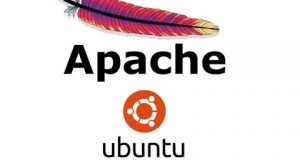Linux
Linux is PC-UNIX in which the kernel was created for PC/AT compatibles by Linus Torvalds of Finland. The name is derived from the kernel’s creator.
Distribution
Although Linux is originally the kernel created by Linus, it does not function as an OS generally available with only the kernel. To function as an OS, various software applications must be combined with the kernel. Thus, the combination of the kernel and some application software supporting it for use as a OS is called a “distribution”.
Types of distribution
A number of application software programs as well as the kernel is needed to run as an OS, but software applications necessary depend on the specific purpose of use or policy. This is the difference of distributions, so there are many distributions.
The biggest difference is the management method of a package (software) shown as follows:
RedHat series
The package management is by rpm. It is easy to install, upgrade and so on.
The main distributions are the following:
- RedHat Linux
- Turbo Linux
- LASER5 Linux
- Kondara MNU/Linux
- Vine Linux
There are more distributions than other series of Linux.
Slackware series
Since it has no management tool, users manage all. It requires considerable knowledge, but it has a high degree of flexibility, so it is popular among the users understanding the system.
The main distributions are the following:
- Slackware
- Plamo Linux
Debian series
The package management is by deb. It is more powerful than that by rpm and closely manages even the dependency relation among the software.
The main distribution is the following:
- Debian GNU/Linux
How to select a distribution
To select a distribution, you have to understand the purpose of use or the policy at which the distribution aims at. Here, I will show you the differences of the distributions I found after using them.
RedHat Linux
Practically all of the Linux of RedHat series are based on this distribution, so the introduction of a new kernel is earlier than in other distributions. However, it might have more trouble in the first version (version *.0) than other distributions of the RedHat series.
For neophilia, I recommend version *.1 or later.
Turbo Linux
It is moderately good for use in companies. There are various types, such as for servers in Turbo Linux.
LASER5 Linux
This distribution allows for the easy use of Japanese, developed on the basis of RedHat Linux. (Note that RedHat can be used in Japanese as well.)
Most of the software for RedHat Linux can be used.
Kondara MNU/Linux
Based on RedHat Linux, this distribution has introduced new useful software. Therefore, it has different parts from other distributions of RedHat series.
For anyone liking novelties.
Vine Linux
A Distribution with emphasis on the stability and enhancement of Japanese environments, Based on RedHat Linux. There are fewer version upgrades than other distributions of RedHat series.
For anyone wanting to use Japanese in plenty.
Slackware
The oldest distribution of Linux. Considerable knowledge is required for package management. It is also necessary to personally set up the Japanese environment.
For professionals or anyone wanting to understand the system “with a will”.
Plamo Linux
Distribution which supports Japanese, based on Slackware.
Although it supports Japanese, considerable knowledge is required, as in the case of Slackware.
Debian GNU/Linux
Distribution with enhanced package management. It was developed mainly by users.
For anyone wanting to engage in the development of distribution (I suppose).
As shown above, there is a great variety of distributions. Since their software can be installed and deleted individually after installation, it is possible to make similar environments whichever you select.
If you want to try using Linux for the first time, I would recommend RedHat Linux or the highly compatible LASER5 Linux, from the viewpoints of the easy installation, large collections of information and the handling of bugs and security holes.
 Linux, Linux OS, Free Linux Operating System, Linux India Linux, Linux OS,Free Linux Operating System,Linux India supports Linux users in India, Free Software on Linux OS, Linux India helps to growth Linux OS in India
Linux, Linux OS, Free Linux Operating System, Linux India Linux, Linux OS,Free Linux Operating System,Linux India supports Linux users in India, Free Software on Linux OS, Linux India helps to growth Linux OS in India



